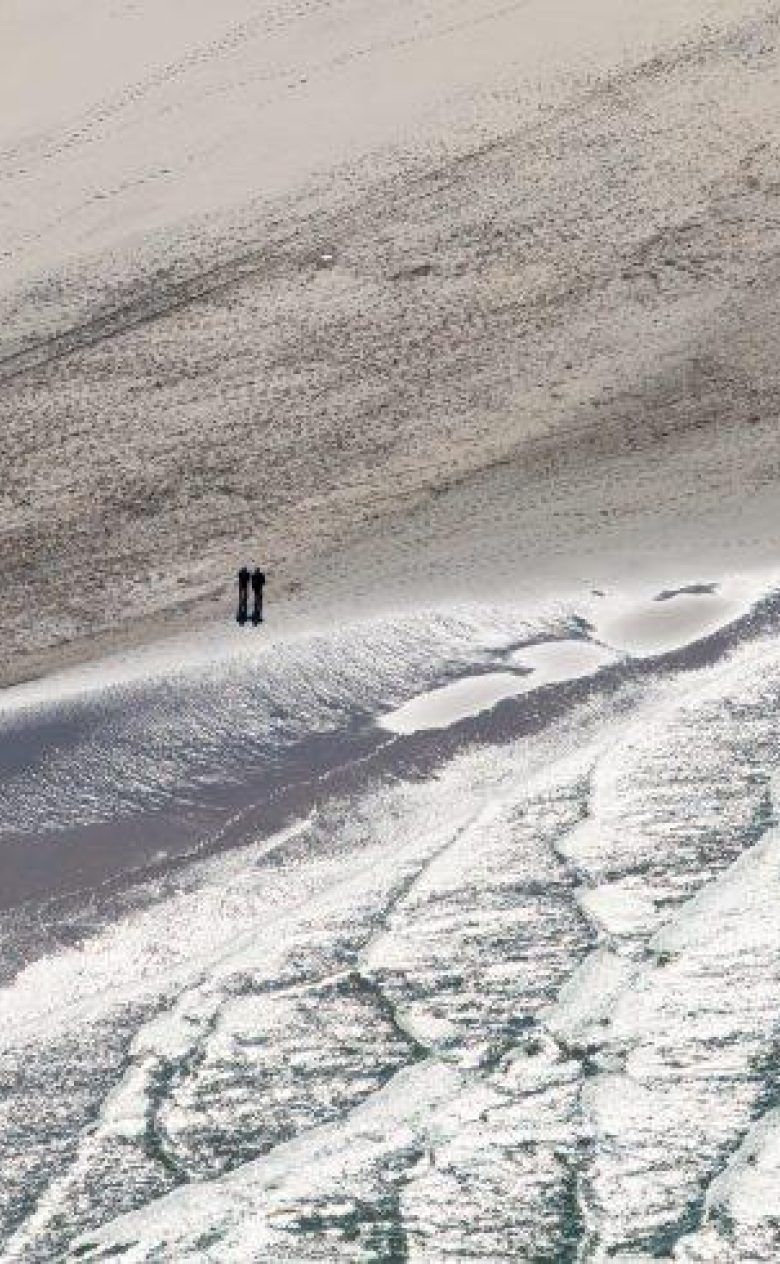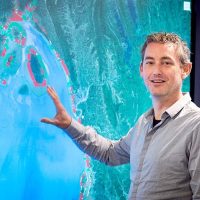Results from ten years of Sand Motor at Kijkduin promising
The evaluation of ten years of the Sand Motor shows that the innovative Sand Motor pilot is a success. The peninsula made of 21.5 million cubic metres of sand was created in 2011 on the coast near Kijkduin using the Building with Nature principle. The aim of the pilot project was to determine whether the wind and currents would spread the sand along the coast and towards the dunes, strengthening the coast in the long term and creating a dynamic nature and leisure area. That goal has been achieved. The evaluation shows that the coast is wider, that the dunes are growing well and that leisure visitors appreciate the area. The Sand Motor is also contributing to knowledge development about coastal management and maintenance, and inspiring other coastal protection projects worldwide.

Minister Cora van Nieuwenhuizen of Infrastructure and Water Management: “I’m proud of the Sand Motor. It has boosted national knowledge development and it is an icon of innovation with an international reputation. The Sand Motor is an excellent example of collaboration between governments, research institutes, universities and the business community. During the Climate Adaptation Summit on 25 January 2021, the importance of Building with Nature was frequently mentioned as an way of coping with climate change. Using the Sand Motor as an example, we are showing the world how this works in practice.”
Long-term coastal protection
The expectation beforehand was that the Sand Motor would widen the dunes and therefore improve coastal protection. After a slow start, dune formation in recent years is progressing well. That is particularly clear to see on the southern part of the Sand Motor, where dunes up to three meters high have formed on the beach. The existing row of dunes near the Sand Motor is also wider now. Dune formation is expected to increase further in the coming years.
Nature
The Sand Motor is a valuable area in terms of landscape and dynamics. There is a more diverse population of benthic animals than on a normal stretch of beach because the Sand Motor has a wider range of habitats. That makes the area more appealing for coastal birds in the area. Counts have shown there are more of them in terms of both numbers and species. In particular, the presence of the Cormorant, the Sandwich Tern, the Common Tern and the Great Black-Backed Gull are of added value because they are less common elsewhere. It should be pointed out that the Sand Motor appears to be less suitable for breeding birds because of the presence of leisure visitors.
Leisure
The Sand Motor is particularly appealing for kite surfers. Walkers and runners also come here in large numbers. The Sand Motor is less popular with bathers because of the large distance to the water’s edge. Visitors to the Sand Motor award the area an average of 8 out of 10 according to research by Wageningen University in 2020. They appreciate the clean beach, the landscape, and the calm and space.
Knowledge and innovation
The Sand Motor has proved to be a breeding ground for broad-based knowledge building about innovative, sandy solutions for coastal management and maintenance. In the Netherlands, the knowledge acquired from the Sand Motor at Kijkduin was used for the construction of the Hondsbossche Duinen and for the pilot sand nourishment project in the Ameland tidal inlet. The knowledge has also been used outside the Netherlands. In the United Kingdom, for example, a small Sand Motor was created near Bacton (in the county of Norfolk) in 2018.
Bas Huisman (coastal expert Deltares): “The Sand Motor has created an exceptionally dynamic coastal area, where sand is redistributed to the dunes and surrounding coast. Sand also spreads on regular sandy coastal sections, but the changes are much more distinct at the Sand Motor. The unique dynamics at the Sand Motor have also led to insights into the natural coastal processes that would otherwise be immeasurable. Deltares has ccordinated the measurement programme, in which we captured both the dynamics of the physical system and ecology in exceptional detail. Based on this, we learned how sand spreads along the coast, how new vegetation and dunes grow, where benthic life develops and how we can combine recreation and nature. Thanks to the Sand Motor pilot we can estimate the effects of future large-scale coastal measures. At Deltares we see this as a very necessary preparation given the challenges we face as a result of climate change”.
The future
The Sand Motor will continue to develop in the years to come. The more sand spreads towards the dunes and beach, the less will remain of the original sandbank. We will continue to monitor and follow this process. After all, the dynamics mean that the Sand Motor may also produce new insights in the future.
The results of ten years of the Sand Motor show that a sand motor concept can play a genuine role in the management and maintenance of the coast. In the Sea Level Rise knowledge programme, the Ministry of Infrastructure and Water Management is investigating other locations where the concept could be used.
Partners
The Sand Motor is a pilot project of Rijkswaterstaat and the Province of South Holland in collaboration with research institutes and universities, including Deltares, Wageningen Marine Research and Delft University of Technology.


